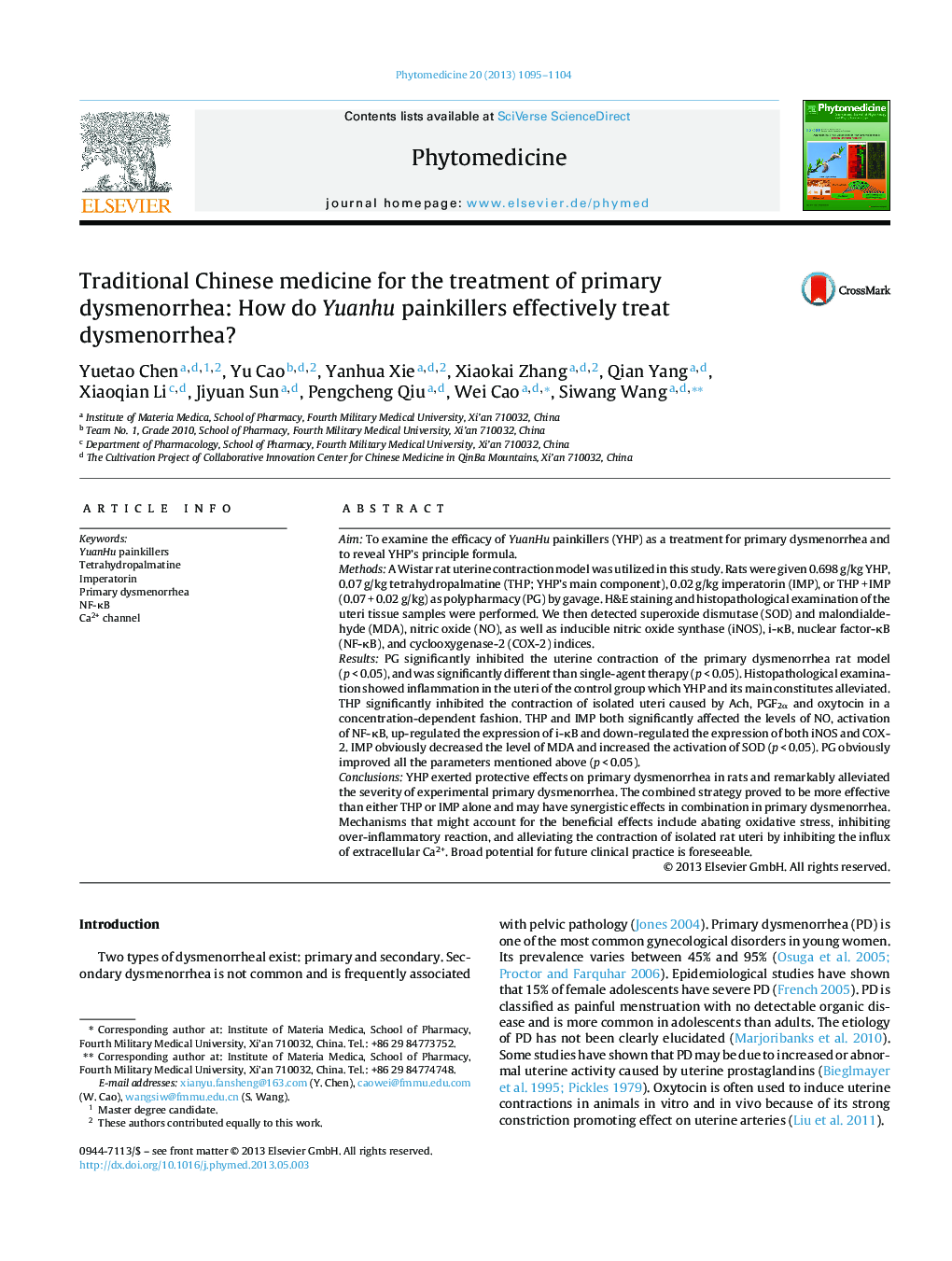| Article ID | Journal | Published Year | Pages | File Type |
|---|---|---|---|---|
| 2496675 | Phytomedicine | 2013 | 10 Pages |
AimTo examine the efficacy of YuanHu painkillers (YHP) as a treatment for primary dysmenorrhea and to reveal YHP's principle formula.MethodsA Wistar rat uterine contraction model was utilized in this study. Rats were given 0.698 g/kg YHP, 0.07 g/kg tetrahydropalmatine (THP; YHP's main component), 0.02 g/kg imperatorin (IMP), or THP + IMP (0.07 + 0.02 g/kg) as polypharmacy (PG) by gavage. H&E staining and histopathological examination of the uteri tissue samples were performed. We then detected superoxide dismutase (SOD) and malondialdehyde (MDA), nitric oxide (NO), as well as inducible nitric oxide synthase (iNOS), i-κB, nuclear factor-κB (NF-κB), and cyclooxygenase-2 (COX-2) indices.ResultsPG significantly inhibited the uterine contraction of the primary dysmenorrhea rat model (p < 0.05), and was significantly different than single-agent therapy (p < 0.05). Histopathological examination showed inflammation in the uteri of the control group which YHP and its main constitutes alleviated. THP significantly inhibited the contraction of isolated uteri caused by Ach, PGF2α and oxytocin in a concentration-dependent fashion. THP and IMP both significantly affected the levels of NO, activation of NF-κB, up-regulated the expression of i-κB and down-regulated the expression of both iNOS and COX-2. IMP obviously decreased the level of MDA and increased the activation of SOD (p < 0.05). PG obviously improved all the parameters mentioned above (p < 0.05).ConclusionsYHP exerted protective effects on primary dysmenorrhea in rats and remarkably alleviated the severity of experimental primary dysmenorrhea. The combined strategy proved to be more effective than either THP or IMP alone and may have synergistic effects in combination in primary dysmenorrhea. Mechanisms that might account for the beneficial effects include abating oxidative stress, inhibiting over-inflammatory reaction, and alleviating the contraction of isolated rat uteri by inhibiting the influx of extracellular Ca2+. Broad potential for future clinical practice is foreseeable.
